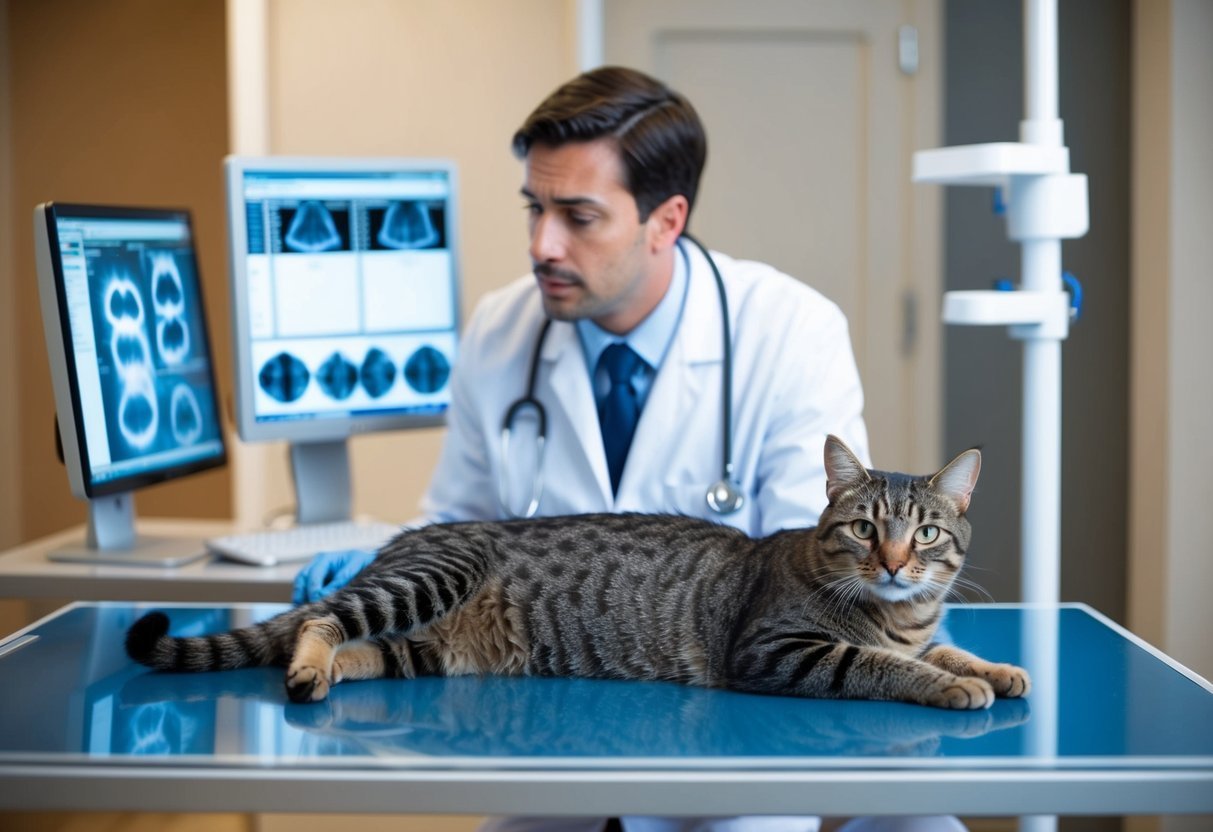When it comes to your cat’s health, unexpected expenses can really catch you off guard.
You might think you’ve done your homework, only to find that your cat’s X-ray bill is higher than you anticipated.
Understanding what factors can influence these costs is key to being prepared and ensuring your pet gets the care they need without breaking the bank.
From the type of X-ray needed to the location where it’s performed, several elements can cause the price to rise.
You might be surprised to learn that even where you take your cat can greatly affect the final bill.
Getting familiar with these reasons can help you better plan for your pet’s care and avoid sudden financial stress.
1) Imported X-Ray Machine Parts
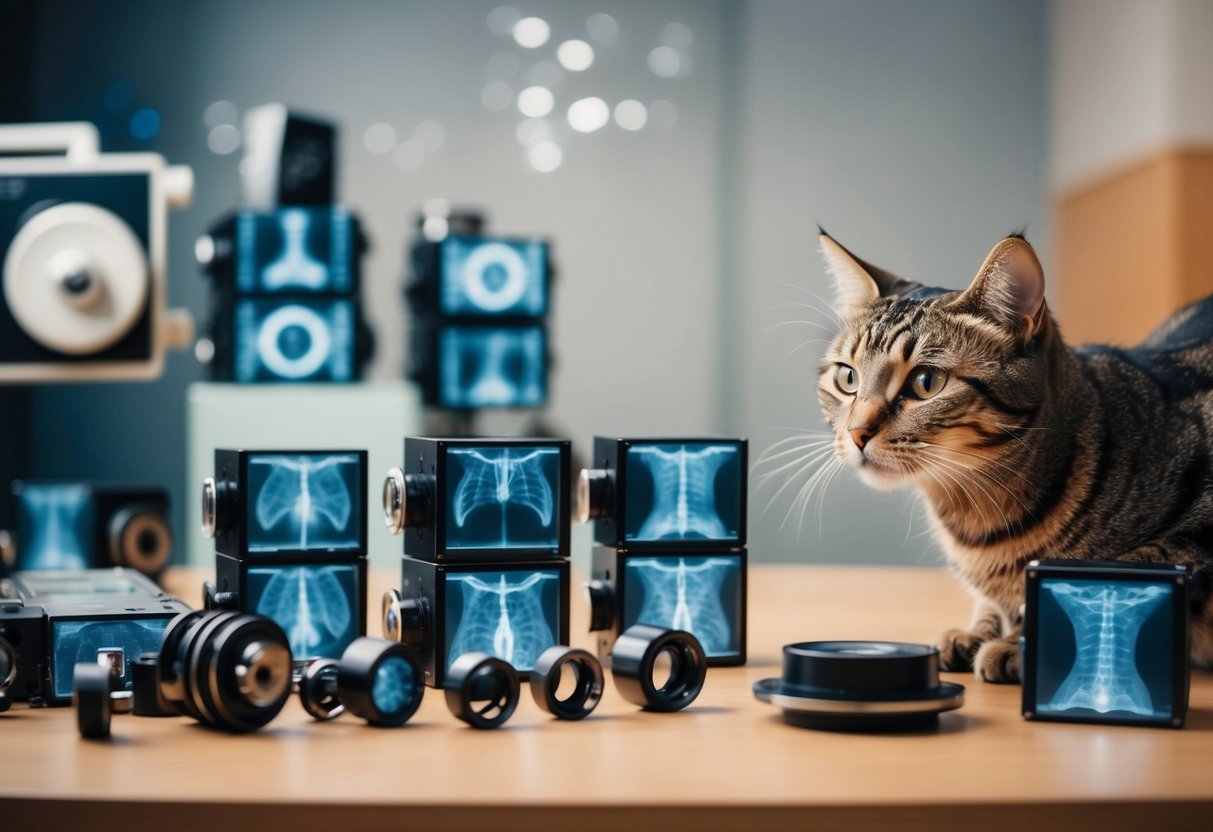
When your cat needs an X-ray, you might notice that the bill is higher than expected.
One reason for this could be the cost of imported X-ray machine parts.
Many veterinary clinics use advanced equipment that includes parts sourced from different countries.
These imported parts can be more expensive due to shipping costs and import taxes.
Also, not all X-ray machines are created equal.
High-quality machines with specialized components often come with a higher price tag.
This means the veterinary clinic may charge you more to cover these costs.
Additionally, imported parts can lead to longer wait times for repairs.
If something breaks, it may take time to get replacement parts, so clinics often factor in these potential delays into their pricing.
Finally, investing in quality equipment can improve the accuracy of your cat’s diagnosis.
Better imaging leads to a better understanding of your pet’s health, which can ultimately save you money on treatment in the long run.
Specialist Radiologist Fees
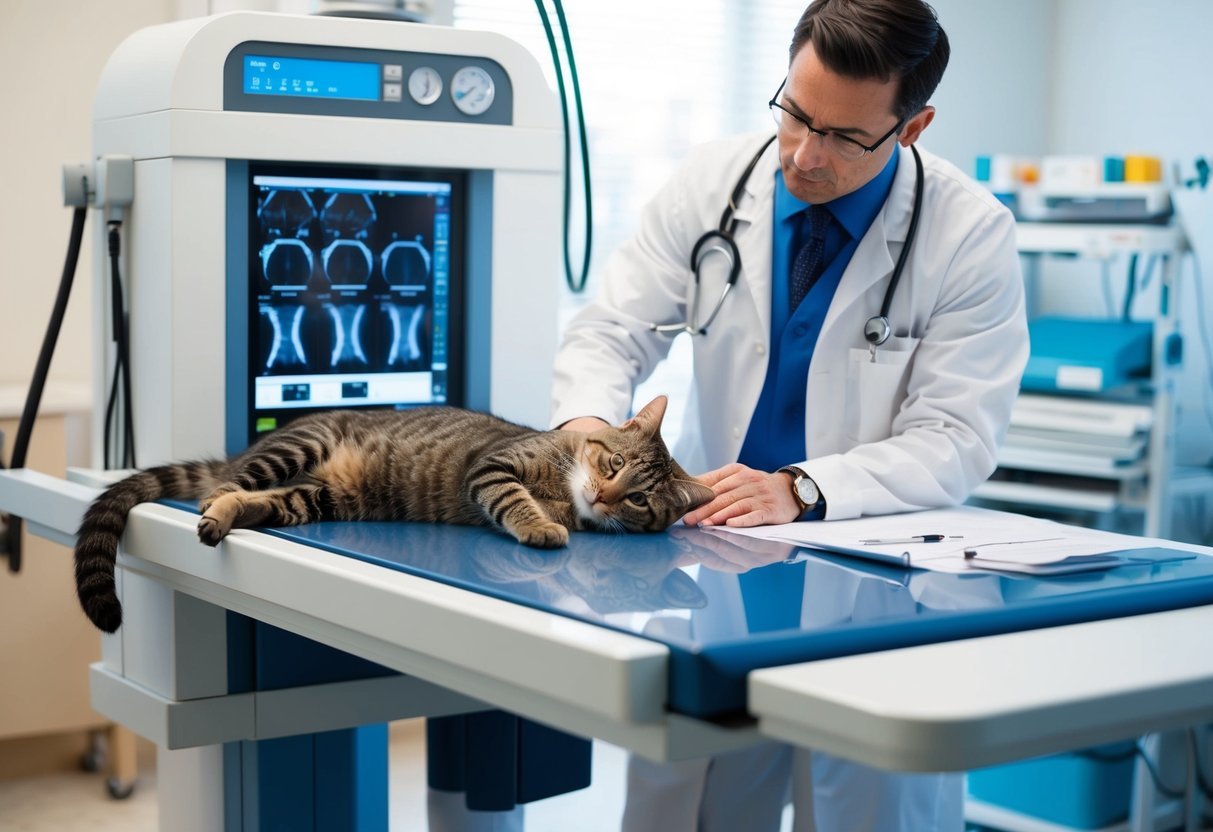
When your cat needs an X-ray, sometimes a specialist radiologist is called in to review the images.
This can add to your bill.
Specialist fees vary, and you’ll often pay more for their expertise.
Radiologists are trained to spot problems that a general vet might miss.
They use advanced techniques and tools to get a clearer picture of your cat’s health.
This specialized attention is beneficial but can also lead to higher costs.
These specialists usually charge hourly rates or fees based on the complexity of the case.
If your cat’s condition is complicated, it might require more time and work, resulting in a larger bill.
In some cases, your vet might refer your cat to a radiologist for better diagnostics.
This means extra charges for both the X-rays and the specialist’s review.
Make sure to ask your vet about all potential costs before the procedure.
Getting an understanding of these fees can help you manage your budget while ensuring your cat gets the best care possible.
Advanced Digital Imaging Software

When your cat needs an X-ray, advanced digital imaging software can play a big role in the cost.
This technology provides clearer and more detailed images than traditional methods.
These digital systems use sensors to capture images quickly.
This means your vet can see what’s happening with your cat’s health sooner.
The software also allows for easier adjustments and enhancements to the images.
Your vet can zoom in on specific areas, which can be important for diagnosing issues.
Using this technology does come with higher costs.
The equipment and software are more expensive than older systems.
While it may raise your bill, the benefits of advanced imaging can be significant.
It can lead to quicker, and often more accurate, diagnoses for your feline friend.
That’s something worth considering when looking at your cat’s X-ray bill.
4) After-Hours Emergency Services
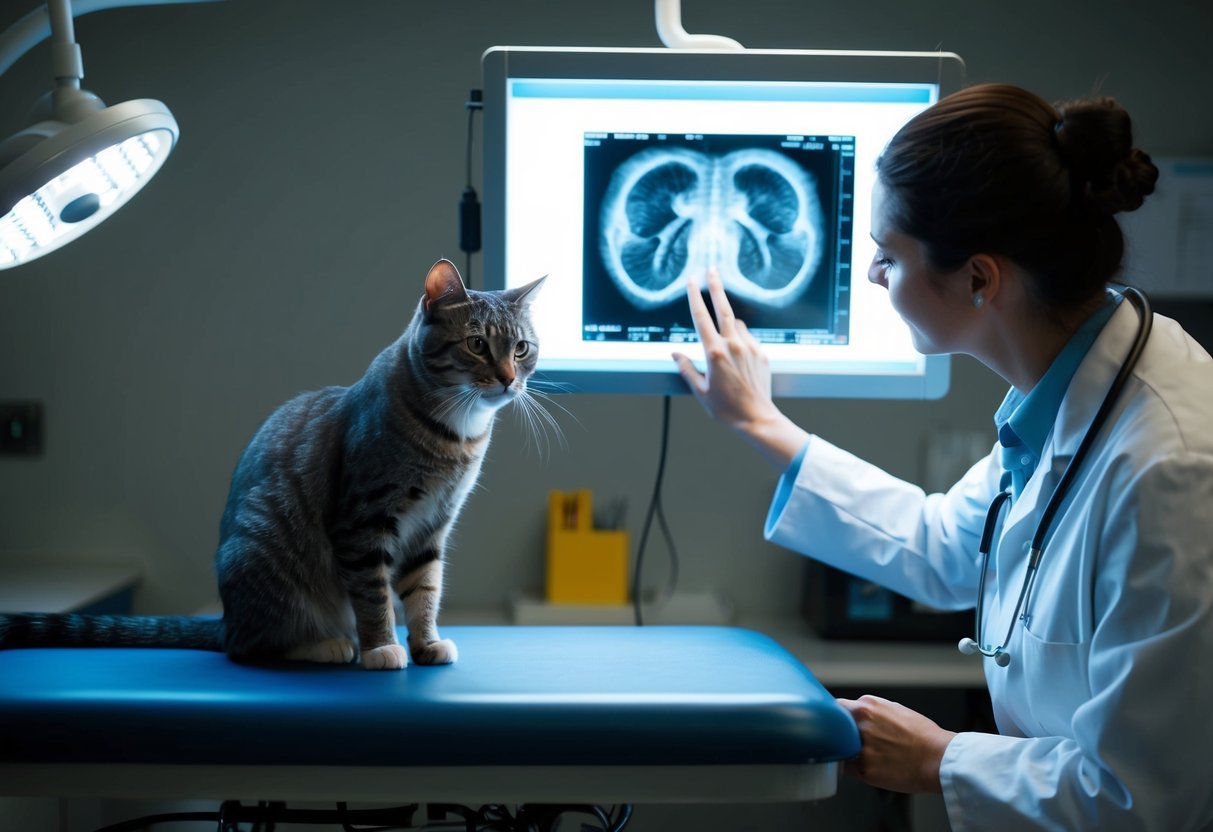
Finding out your cat needs an X-ray after regular hours can hit your wallet hard.
Emergency veterinary clinics are available 24/7 for urgent situations.
This convenience usually comes with a higher price tag.
Emergency services charge extra fees to cover staffing and equipment costs during off-hours.
You might pay more simply because it’s late at night or on a holiday.
This can catch pet owners off guard.
Be prepared for possible additional fees.
They can add up quickly, especially when you consider the urgency of your pet’s condition.
If your cat shows signs of distress, getting help fast is important, even if it costs more.
Remember, the cost difference can vary by clinic.
Emergency vets often have more advanced equipment, which can also affect the price.
Knowing this can help you plan for potential costs when your pet needs urgent care.
5) Rare Cat Breed Diagnosis

When you own a rare cat breed, special considerations come into play during diagnoses.
Certain breeds, like the Bengal or Egyptian Mau, can have unique health issues that require more advanced testing.
These specialized tests often include X-rays, which can add to your overall bill.
The veterinarians might need to look for breed-specific conditions that are not common in other cats.
For example, some breeds have genetic predispositions to certain diseases.
If your cat belongs to one of these breeds, your vet may recommend more comprehensive imaging studies.
This is not just for peace of mind; it ensures your cat gets the right treatment.
Understanding these factors will help you anticipate higher costs when your rare cat needs an X-ray or other diagnostic procedures.
Being proactive about your rare breed’s health can save you money and stress in the long run.
Additional Anesthetic Required
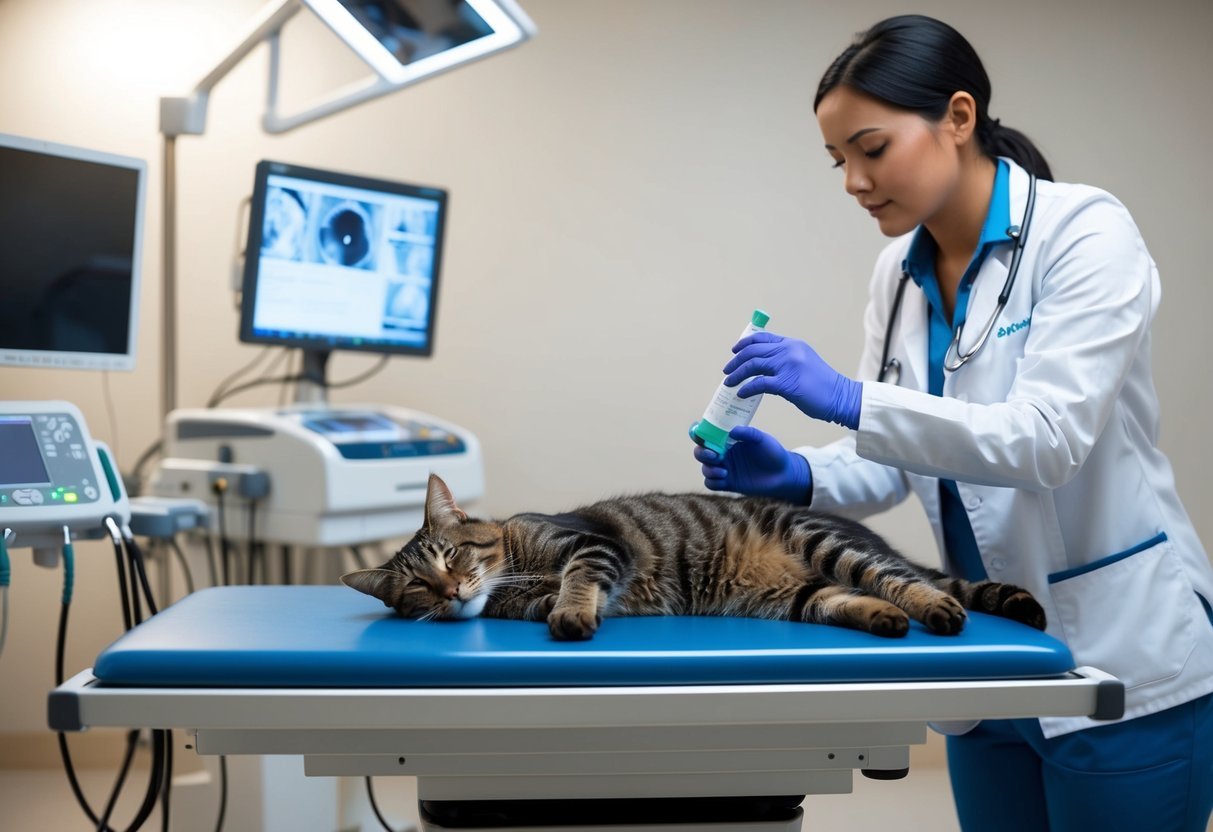
When your cat needs an X-ray, the use of anesthetics can increase the bill.
This is often necessary to keep your cat calm and still during the procedure.
If your cat is anxious or in pain, sedation may be needed.
This helps ensure a clearer image.
The cost for this additional care can range from $50 to $220, depending on the type and amount of anesthesia used.
Your veterinarian will evaluate your cat’s health and decide the best approach.
They want to make sure the procedure is safe while getting the needed results.
This charge is added to the base cost of the X-ray.
It can surprise many pet owners who didn’t expect the extra expense.
Always discuss these potential costs with your vet ahead of time.
Understanding these factors can help you better prepare for your visit and avoid surprises on your bill.
7) Consultation with Veterinary Surgeon

When your cat needs an X-ray, you might have to pay for a consultation with a veterinary surgeon.
This can add to your bill significantly.
The surgeon’s expertise is important if the X-ray shows anything concerning.
They can help decide on the next steps for treatment or further examination.
These consultations typically involve a detailed assessment of your cat’s condition.
The vet will discuss findings with you and suggest any necessary procedures.
This extra step ensures your cat receives the right care based on their specific needs.
You want to make sure your pet is in good hands, which is why these consultations are important.
While the costs can add up, the peace of mind you get from a professional opinion is often worth it.
You’re investing in your cat’s health and future.
Understanding Veterinary Costs

When it comes to veterinary bills, it’s important to know what contributes to the costs.
This section will break down the basics of cat X-rays and highlight the various factors that influence pricing.
Being informed can help you better prepare for your vet visits.
Basics of Cat X-Rays
Cat X-rays are essential diagnostic tools that help veterinarians see the internal structure of your pet.
The process typically involves your cat lying on an X-ray table while the images are captured.
Routine X-rays for conditions like fractures or foreign objects can be fairly straightforward.
However, specialized X-rays, like those needed for dental work, may cost more.
On average, you can expect to pay anywhere from $75 to $300 for a standard X-ray depending on your clinic’s fees and your geographic location.
Factors such as sedation and additional views can also impact the final bill.
Factors Influencing Prices
Several factors can affect the cost of cat X-rays.
Here are some of the main ones to consider:
- Location: If you live in a big city, expect higher prices due to the cost of living.
- Type of Clinic: Emergency clinics generally charge more than regular vet offices due to added fees for urgent care services.
- Sedation Needs: If your cat is anxious or needs to stay still, sedation might be necessary, which can add $50 to $200 to your final bill.
- Reputation of the Vet: A well-known vet with specialized experience may charge more for their services.
Understanding these elements can help you plan financially for your cat’s care.
Analyzing Additional Charges
When you take your cat for an X-ray, unexpected costs can pop up.
Two common charges that can add to your bill are consultation fees and follow-up care.
Consultation Fees
Before any X-ray, your vet usually conducts a consultation.
This is important for assessing your cat’s health and deciding what imaging is necessary.
The consultation can cost between $50 and $150.
During this visit, your vet may perform a physical exam or discuss your cat’s symptoms.
These assessments are crucial in ensuring accurate X-ray results.
Tip: Ask about the consultation fee upfront; this way, you won’t face surprises when receiving the bill.
Follow-Up Care
After the X-ray, additional care might be necessary, especially if your cat needs treatment based on the findings.
Follow-up visits can range between $75 and $200 depending on the complexity of the issue.
Medications, further diagnostic tests, or additional procedures may also contribute to the total cost.
Don’t forget to ask about these potential charges while planning your cat’s care.
Budgets can be tight, so it’s wise to prepare for any extra expenses that might arise.
Frequently Asked Questions
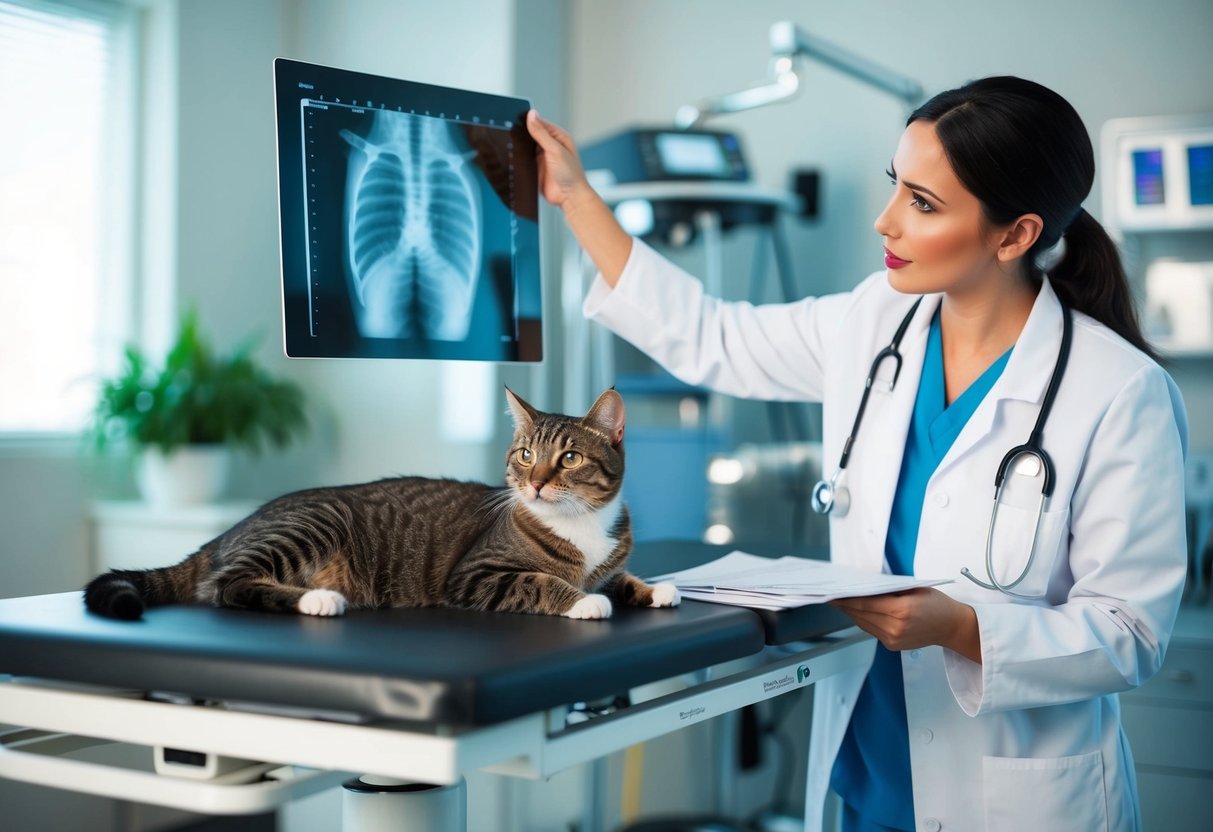
You might have some questions about why your cat’s X-ray costs more than expected or why certain symptoms are occurring.
Here’s a look at some common concerns that pet owners face regarding their cats’ health and related expenses.
Why does my cat’s belly seem so bloated even though she’s acting fine?
A bloated belly in a cat can be confusing, especially if she seems otherwise healthy.
This could indicate gas buildup or digestive issues.
However, it’s important to monitor her closely for any changes in behavior or condition.
What’s the average cost of a cat X-ray if I don’t have pet insurance?
Without pet insurance, the cost of a cat X-ray generally ranges from $75 to $500.
Prices depend on various factors, like the specific type of X-ray and the clinic’s location.
Make sure to ask your vet about the exact costs before proceeding.
How can I determine if my cat’s stomach is just tough or actually bloated?
To check if your cat’s stomach is truly bloated, gently press on her belly.
If it feels hard and your cat reacts negatively, that could be a sign of bloating.
If you’re unsure, it’s always best to consult your veterinarian.
What could be the reason for my old cat having a bloated stomach?
Older cats can sometimes develop a bloated stomach.
This can indicate serious health issues, such as fluid accumulation or organ problems.
Conditions like liver disease or heart problems can cause bloating, so you should get her checked by a vet.
What are the common causes of fluid accumulation in my cat’s belly?
Fluid accumulation in your cat’s belly can result from several conditions.
These include heart disease, liver problems, or even certain cancers.
If you notice this symptom, prompt veterinary attention is crucial.
Why is the price tag for a cat’s X-ray higher than I expected?
The cost of a cat X-ray can be higher due to several factors.
Expenses can include imported X-ray machine parts, specialist radiologists, and advanced imaging software.
Emergency services during after-hours can also drive up the bill, especially for urgent care situations.

